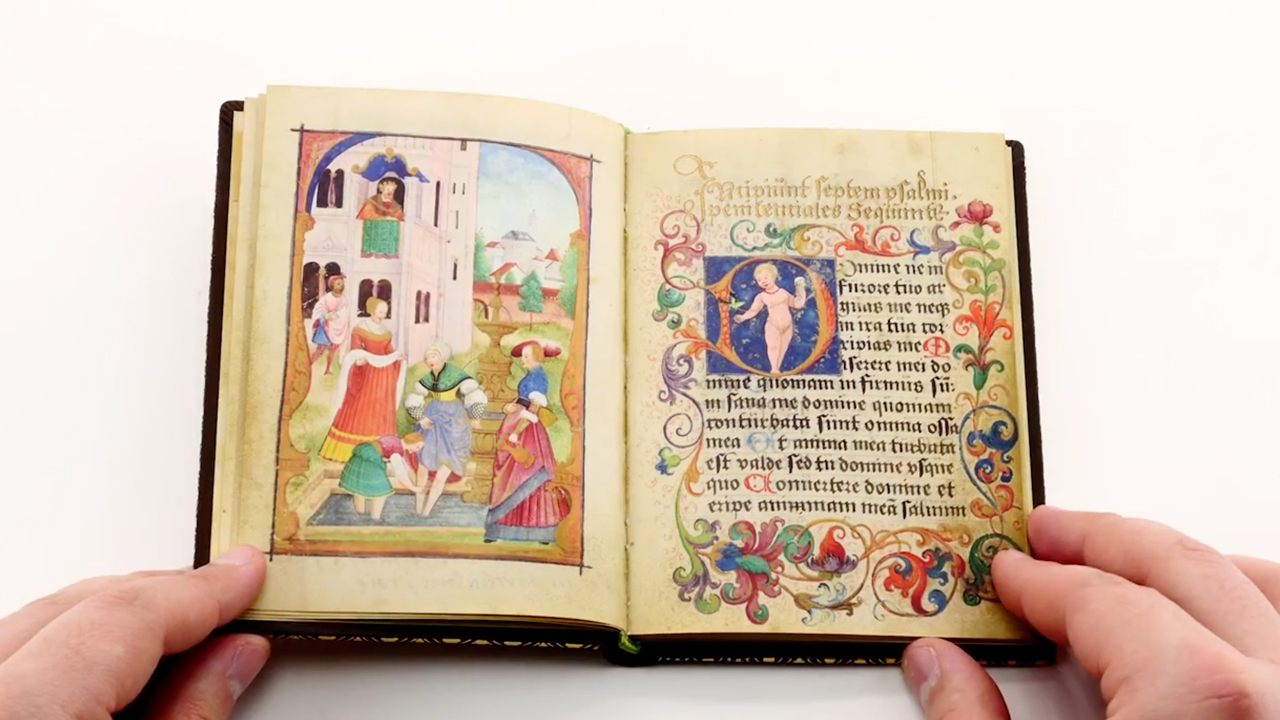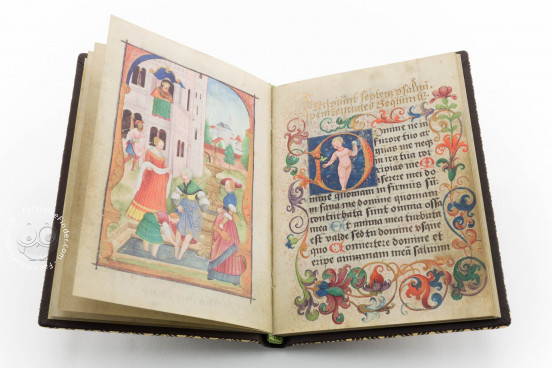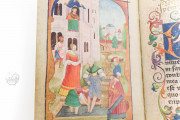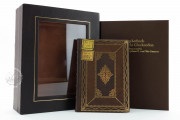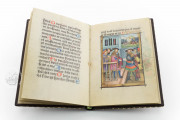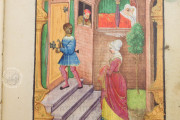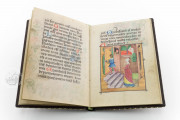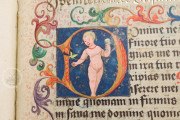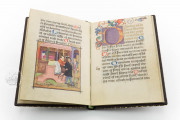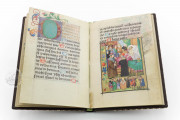Decorated in Nuremberg, southern Germany, at the dawn of the print age, the Prayers of Repentance by Albrecht Glockendon for John II Palatinate-Simmern attests to a tumultuous period of transition from the Late Middle Ages to modern times. Its meticulously executed illuminations provide a glimpse into Renaissance fashion and architecture by setting the Old Testament story of David and Bathsheba in 16th-century Europe. Albrecht Glockendon, the brother of Nikolaus Glockendon, decorated the manuscript between 1532 and 1533 for John II, Count Palatine of Simmern, one of the greatest art patrons of his age.
An Old Testament Story in 16th-Century Style
The manuscript boasts nine large miniatures and several historiated initials, executed by miniaturist and woodcutter Albrecht Glockendon the Younger (c.1495-1545). Seven miniatures deal with the Old Testament story of David and Bathsheba, in which David embodies an exemplary sinner and penitent. The Latin text is a refined example of Northern Gothic Textualis Formata.
Albrecht Glockendon rendered the scenes in exquisite detail, decorating elaborate architectural forms with pillars, gables, and balconies, filling the interiors with furniture, drinking cups, and books, providing a glance of the valuable fabrics of bedcovers, napkins, and curtains. The miniatures also provide a glimpse into contemporary Renaissance fashion.
Born into a prominent family of artists based in Nuremberg, Albrecht Glockendon was the son of printer and painter Georg Glockendon and was influenced by the art of Albrecht Dürer and his brother Nikolaus Glockendon. At the time, Nuremberg was one of the major centers of German illumination.
An Enlightened Patron
The Prayers of Repentance was commissioned by John II, Count Palatine of Simmern (1492-1557), a cultivated ruler and patron of the arts. A writer, translator, publisher, and artist himself, John II was one of the first princes to promote the then-new printing technology by establishing a printing house in Simmern—John II was also a patron of painting and sculpture.
Binding description
The book was probably rebound in dark-brown leather during the 18th century and trimmed to the format 14.5 × 10.6 cm on the occasion.
We have 1 facsimile edition of the manuscript "Prayers of Repentance by Albrecht Glockendon for John II Palatinate-Simmern": Bußgebetbuch von Albrecht Glockendon für Johann II. von Pfalz-Simmern facsimile edition, published by Faksimile Verlag, 2010
Request Info / Price
